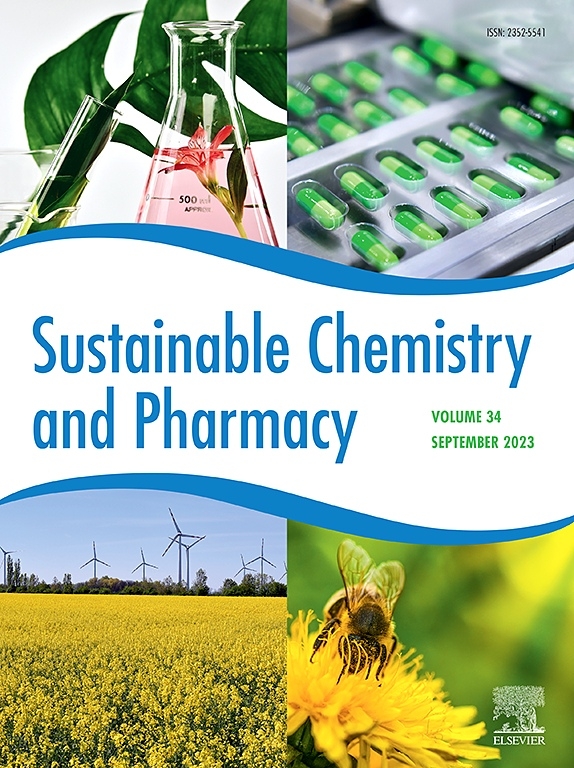Tailored biopolymer and its nanocomposites along with EPR frameworks under circular economy: A dual strategy for sustainable packaging solutions
IF 5.8
2区 化学
Q2 CHEMISTRY, MULTIDISCIPLINARY
引用次数: 0
Abstract
The widespread use of synthetic plastics in packaging while offering affordability and durability has led to severe environmental consequences, including persistent waste and rising greenhouse gas (GHG) emissions. This review critically examines bioplastics as a sustainable packaging alternative, integrating bibliometric mapping (VOSviewer), systematic literature analysis, and techno-economic assessments (TEA) to provide a data-driven overview. Key findings indicate that life cycle assessments (LCA) of PLA- and PHB-based materials report up to a 40 % reduction in greenhouse gas (GHG) emissions compared to conventional LDPE. These materials have achieved technology readiness levels (TRL) of 6–7 in various pilot-scale packaging applications, reflecting their progress toward commercialization. Chemical modifications and Nanotechnology-enabled reinforcement strategies have shown promising improvements in barrier properties and mechanical strength, addressing major commercialization barriers. The study also explores the policy landscape, noting that Extended Producer Responsibility (EPR) frameworks and circular economy regulations are gaining traction in regions such as the EU and India. Despite technological advancements, challenges such as high production costs, limited consumer awareness, and underdeveloped waste segregation systems persist. This review emphasizes the importance of aligning scientific progress with policy incentives and public outreach to increase market adoption. A strategic call-to-action is made for increased investment in scalable technologies, harmonized regulatory frameworks, and targeted R&D to accelerate the transition towards a circular, bioplastic-driven economy. The findings provide a comprehensive roadmap for stakeholders to advance sustainable packaging solutions in both academic and industrial domains.

循环经济下定制生物聚合物及其纳米复合材料与EPR框架:可持续包装解决方案的双重战略
合成塑料在包装中广泛使用,同时提供可负担性和耐用性,导致了严重的环境后果,包括持续的浪费和温室气体(GHG)排放的增加。这篇综述批判性地考察了生物塑料作为一种可持续的包装替代品,整合了文献计量图(VOSviewer)、系统文献分析和技术经济评估(TEA),以提供数据驱动的概述。主要研究结果表明,与传统LDPE相比,PLA和phb基材料的生命周期评估(LCA)报告的温室气体(GHG)排放量减少了40%。这些材料在各种中试规模的包装应用中已经达到了6-7的技术准备水平(TRL),反映了它们在商业化方面的进展。化学修饰和纳米技术支持的强化策略显示出有希望改善屏障性能和机械强度,解决了主要的商业化障碍。该研究还探讨了政策前景,指出扩大生产者责任(EPR)框架和循环经济法规正在欧盟和印度等地区获得关注。尽管技术进步,挑战,如高生产成本,有限的消费者意识,和不发达的废物分类系统仍然存在。这篇综述强调了将科学进步与政策激励和公众宣传结合起来以增加市场采用的重要性。提出了一项战略行动呼吁,要求增加对可扩展技术的投资,协调监管框架,并有针对性地进行研发,以加速向循环生物塑料驱动的经济过渡。研究结果为利益相关者提供了一个全面的路线图,以促进学术和工业领域的可持续包装解决方案。
本文章由计算机程序翻译,如有差异,请以英文原文为准。
求助全文
约1分钟内获得全文
求助全文
来源期刊

Sustainable Chemistry and Pharmacy
Environmental Science-Pollution
CiteScore
8.20
自引率
6.70%
发文量
274
审稿时长
37 days
期刊介绍:
Sustainable Chemistry and Pharmacy publishes research that is related to chemistry, pharmacy and sustainability science in a forward oriented manner. It provides a unique forum for the publication of innovative research on the intersection and overlap of chemistry and pharmacy on the one hand and sustainability on the other hand. This includes contributions related to increasing sustainability of chemistry and pharmaceutical science and industries itself as well as their products in relation to the contribution of these to sustainability itself. As an interdisciplinary and transdisciplinary journal it addresses all sustainability related issues along the life cycle of chemical and pharmaceutical products form resource related topics until the end of life of products. This includes not only natural science based approaches and issues but also from humanities, social science and economics as far as they are dealing with sustainability related to chemistry and pharmacy. Sustainable Chemistry and Pharmacy aims at bridging between disciplines as well as developing and developed countries.
 求助内容:
求助内容: 应助结果提醒方式:
应助结果提醒方式:


